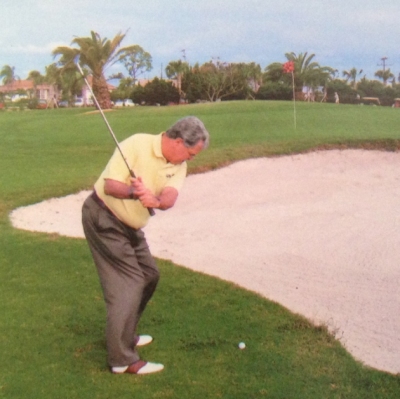Teaching the LOB SHOT
 DEFINITION
DEFINITION
The “lob” shot, sometimes referred to as the flop shot, is a high-flying pitch shot which, upon landing, has very little if any roll. The lob can be used anywhere when this flight characteristic is required.
For example, a player might be just off the green by five or six yards, but a pot bunker stands in his/her way. Running the ball through is not an option due to the severity of the front lip of the bunker, and the pin is tucked only a few feet behind the bunker, giving the player no option but to put the ball into the air with a steep enough angle of flight to ensure a minimum degree of roll.
EXECUTION
Opinions vary somewhat from one teacher to another as to what a player should key on when performing a lob pitch. Some say the use of a lot of hands and wrists is best; others suggest keeping the wristiness to a minimum! It’s no wonder so many students become confused and frustrated over this shot. What teachers do agree on almost across the board is the need for a long, unhurried swinging motion. Not a move creating a lot of speed, but one designed to send the ball up at a steep angle to provide the soft, controlled landing desired.
On a personal note, I firmly believe this shot needs to be controlled by the lead hand and arm. The lead arm is in position to create and retain the needed radius of the swing as well as control the speed of the motion. Being in front of the grip, the lead hand is also in position to prevent the club from twisting and turning during the swing. An open stance with the body weight slightly favoring the front foot is what I normally use and what I recommend to my students. One last key point: be aware of maintaining your spine angle as you strike the ball, and, if having trouble getting the ball up quickly, try keeping your spine angle into the finish even to the point of feeling you are leaning forward. This will help prevent the body from trying to tunnel under the ball.
CONCLUSION
It’s certainly more advantageous to execute this shot with a lob wedge, however a sand wedge of 56° to 58° will do the job just fine in most cases. Good golfing!




